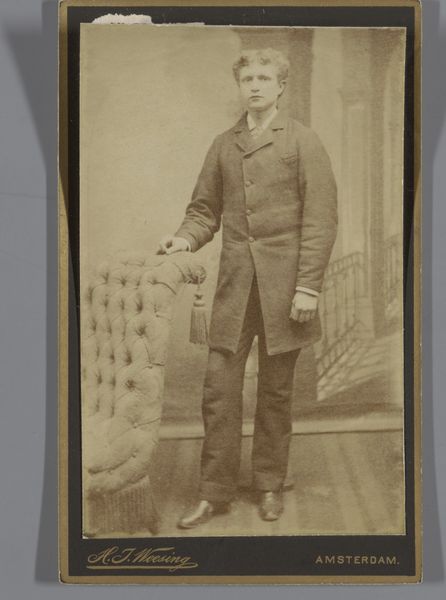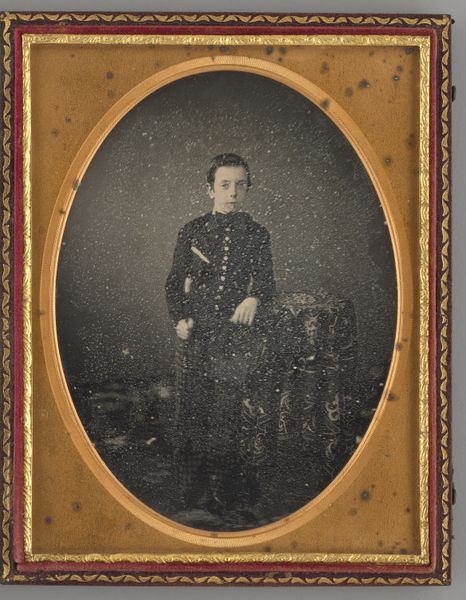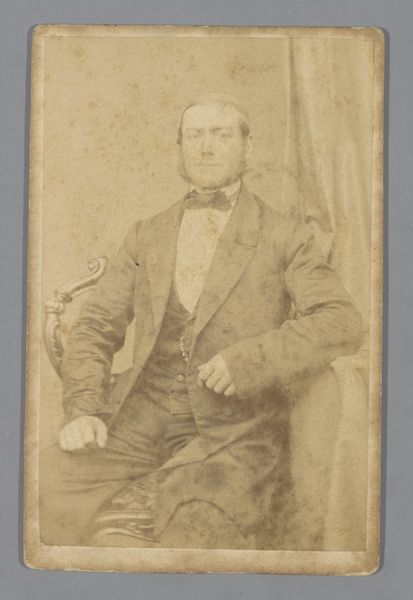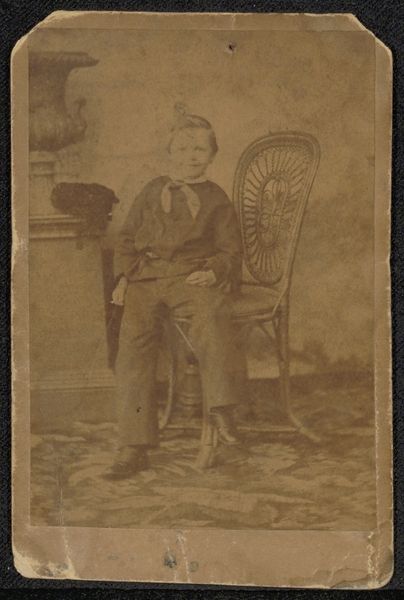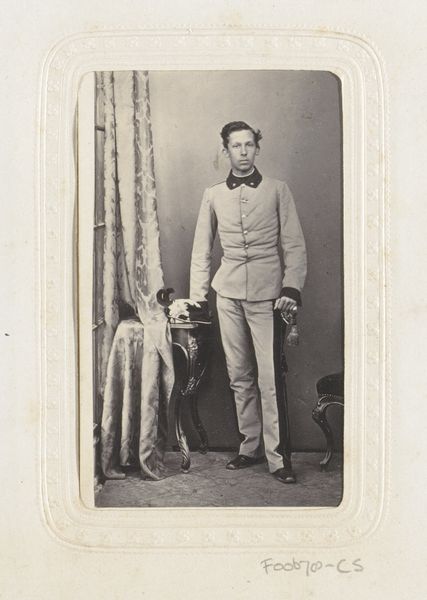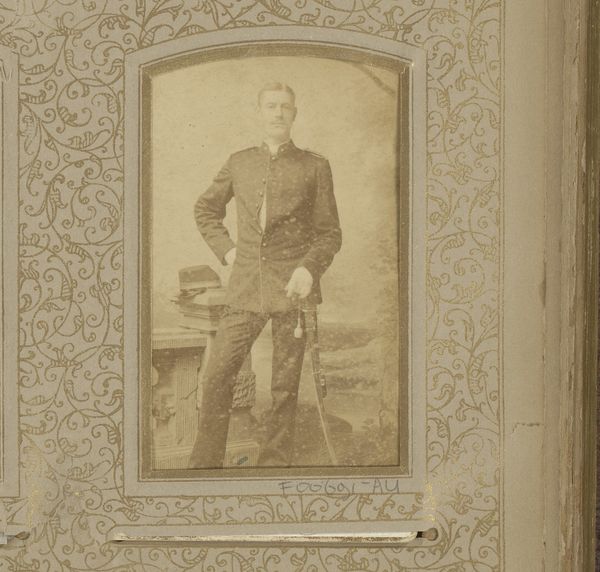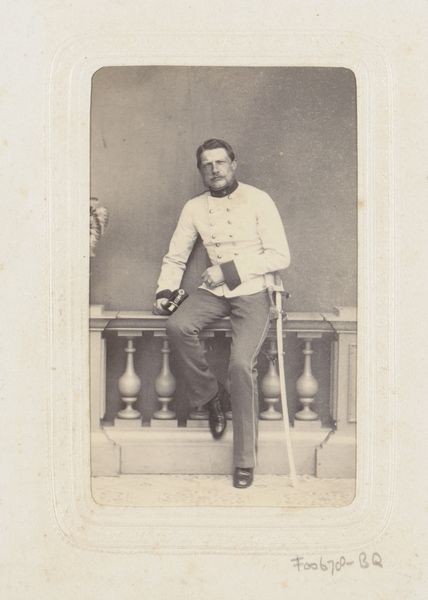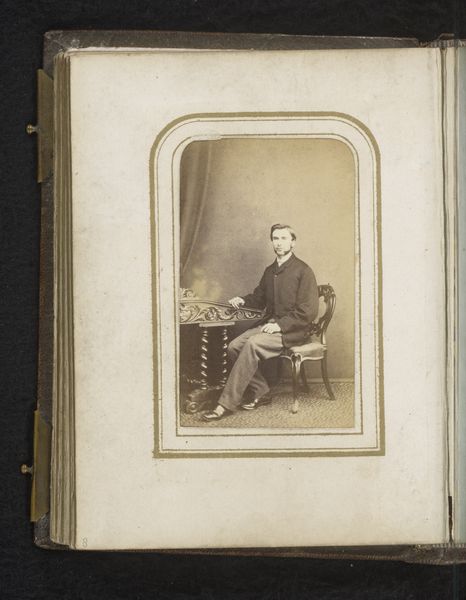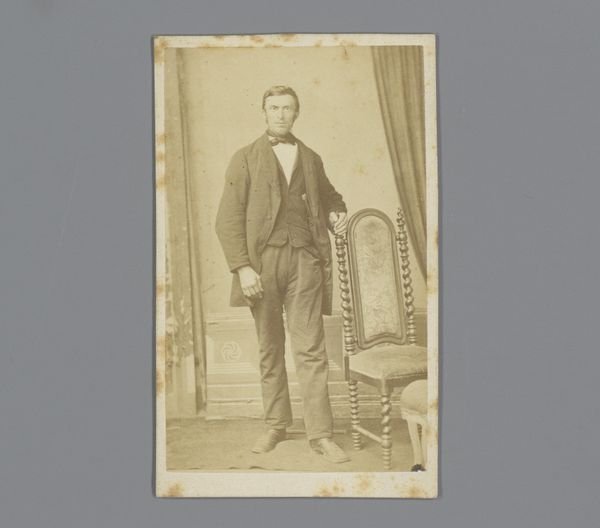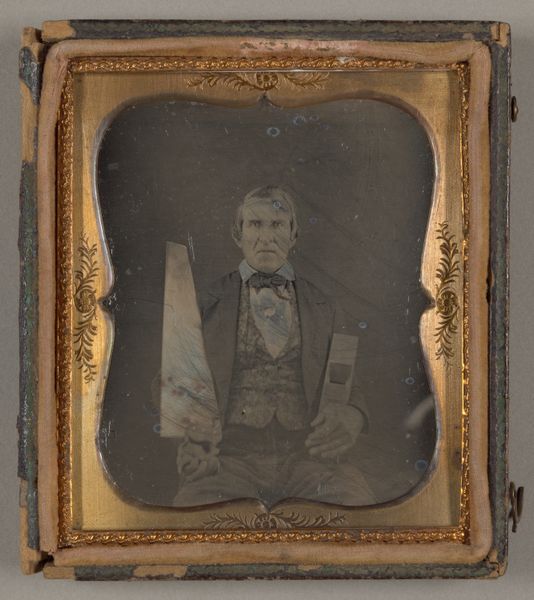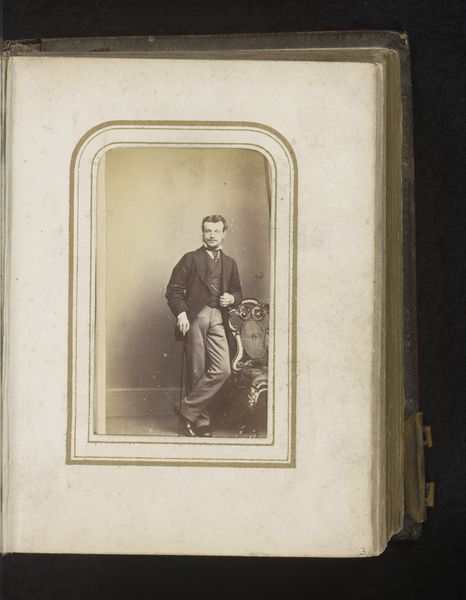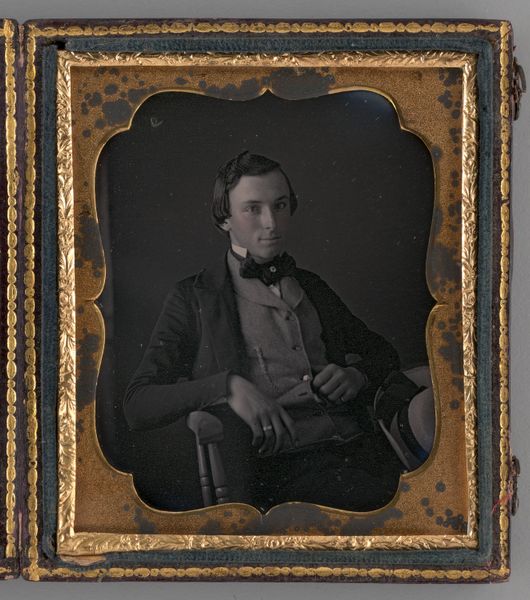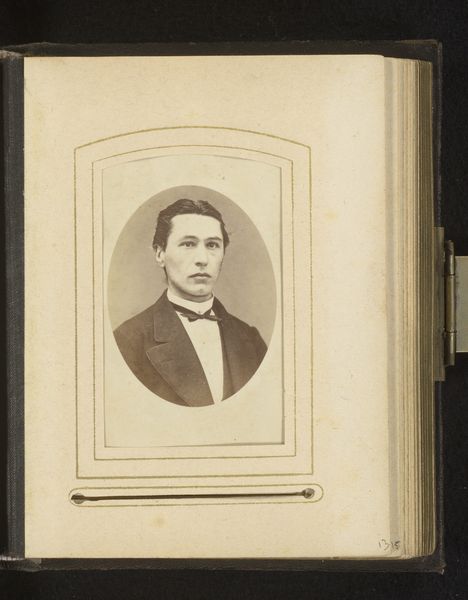
daguerreotype, photography
#
portrait
#
16_19th-century
#
daguerreotype
#
photography
#
united-states
#
neutral brown palette
#
history-painting
#
realism
Dimensions: 10.9 × 14 cm (plate); 12 × 15 × 2.5 cm (case)
Copyright: Public Domain
Curator: Here we have an untitled daguerreotype, simply referred to as "Confederate Officer," dating from the 1860s, placing it squarely within the American Civil War era. It's a fascinating, if somber, relic. Editor: It's quite striking, isn't it? The neutral brown palette and the detail captured despite the age, a compelling stillness, a very austere mood emanates. Curator: Absolutely. The daguerreotype, a very early form of photography, lends an incredible sense of realism. But that realism, in this context, is politically charged. We see him here, clearly an officer, presumably of the Confederacy, in uniform. The image speaks volumes about the complex and fraught history of this period. Editor: The officer's pose almost conveys a certain tension, though he is relaxed—sitting and leaning against an odd checkered cube with some type of musical instrument. The artist did use some good geometry when arranging the components in the frame and focusing on the subjects body form. Curator: Indeed. Consider how this image would have been viewed at the time. It would have been circulated amongst those loyal to the Confederacy, reinforcing their cause. The act of image-making, particularly portraits of military figures, helped solidify a visual culture around the Confederate identity. Editor: Thinking about form though, what do you make of the odd checkered support he leans on. What could this support symbolize and is the presence of the tuba incidental, or also symbolic? Curator: That’s a wonderful observation, they both act as artifacts reflecting their time. The Confederacy created specific music traditions to bind their ideology through sound. Also, there are theories suggesting such supports ensured better image stability during the very slow development period. The question remains whether that checkered fabric could mean a higher ranking officer or signify specific units engaged. The cultural ramifications extend into current memory too. Editor: Seeing those techniques through time's looking glass transforms how we respond to an artwork. Focusing in on this officer opens a world that once lived that one should not gloss over to extract all we can get from this rare photograph. Curator: Precisely. By understanding its history, production, and how it participated in image politics of the Civil War, we grasp more of the power these visuals command.
Comments
No comments
Be the first to comment and join the conversation on the ultimate creative platform.

